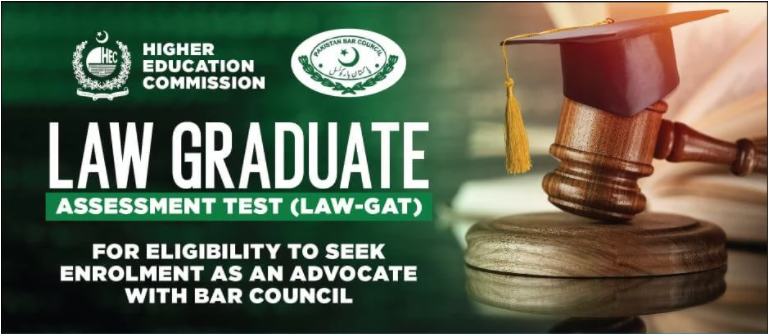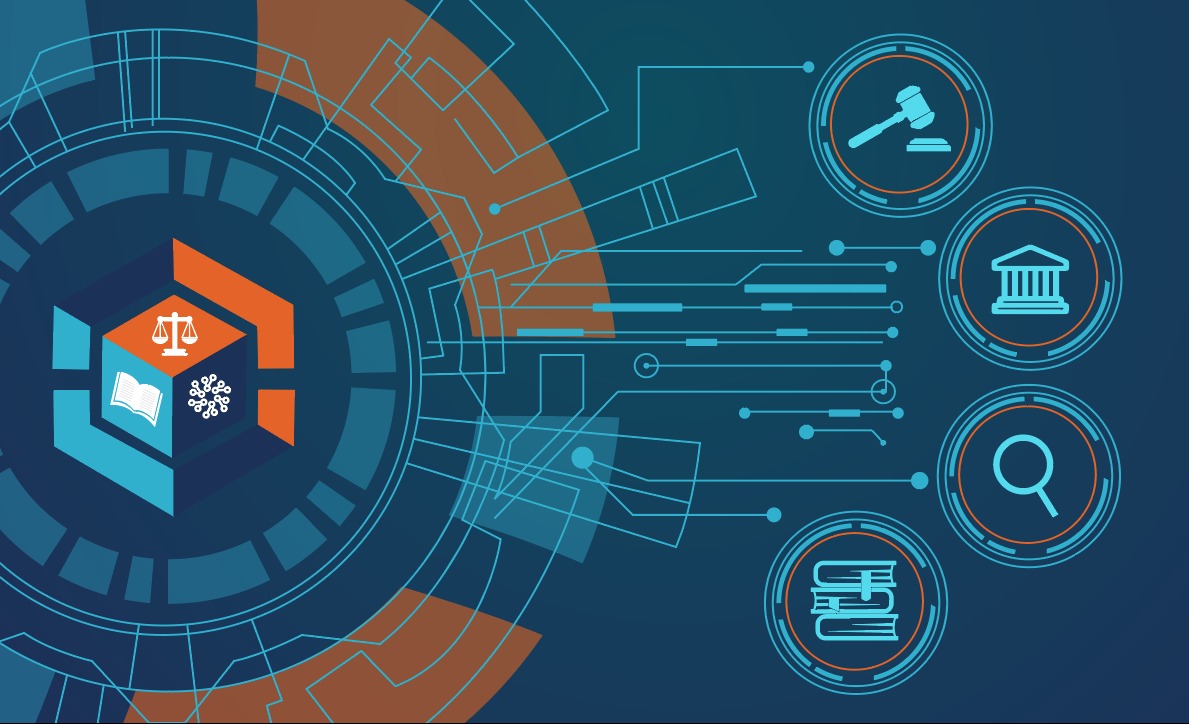HEC has announced LAW GAT test registration dates for the LAW Graduate assessment test 2022. The LAW-GAT will tentatively be held on February 20, 2022. Candidates who have passed Bachelor’s degree in Law or equivalent from a university recognized by HEC/PBC can register themselves online through http://etc.hec.gov.pk Applications can be submitted online at the HEC website. HEC LAE-GAT is compulsory for all LLB graduates before entering the legal profession for practicing law.
The test will consist of Multiple Choice Questions (MCOs). Applicants who have registered through HEC online registration process will download their Roll Number Slip through http://etc.hec.gov.pk a week before the test date. Email/SMS will be sent to registered applicants regarding the test date time, and venue. Candidates are required to provide a valid email/mobile number while filling out the online application form.
A print of Roll Number Slip and original CNIC will be required to enter Test Centre.
Eligibility Criteria for HEC Law GAT 2022
- Persons having passed Bachelor’s degree in Law from a university recognized by HEC and PBC are eligible to apply.
HEC-Law GAT Test Centers
The Test will be conducted in the following Centers:
- Islamabad
- Lahore
- Karachi
- Sukkur
- Abbottabad
- Quetta
- Multan
- Hyderabad
- Turbat
- Bahawalpur
- Peshawar
- Muzaffarabad
- Faisalabad
- Gilgit
Applicants may select any test Centre from the list available in the application form.
Test win only be held on any of the above Centers if a minimum of 100 applicants will select that Centre.
Test Centre once selected will not be changed after registration.
How to Register for HEC Law Graduate Assessment Test GAT 2022
- Please visit the following link: http://etc.hec.gov.pk for online registration.
- In case of any difficulty during online registration, please send an email at etc@hec .gov.pk or visit HEC Secretariat or HEC Regional Centers for guidance
- Application submission comprises two steps: profile completion using the “My Profile” section, and application submission using “Law GAT Test” link on the menu panel in the left-hand sidebar of online portal.
- Only SUBMITTED applications will be considered for LAW-GAT Test and applications in SAVE or
- The INCOMPLETE mode will not be entertained.
- A test fee of Rs. 3000/- is to be deposited Online/ATM in Account No. O 1127900567403
Account Title: Higher Education Commission,
Bank: Habib Bank Limited, Branch Code: 0112.
Bank draft/ Pay Order will not be accepted
- Applicants are required to submit original fee deposit slip/ATM/online transfer through courier at
- Room No. 13-207,2nd Floor, HRD Building, HEC, H-8, Islamabad on or before the last date of registration.
- Please mention your CNIC number at the backside of the deposit slip.
- The examination is non-transferable non-refundable and
- Deadline for Online Registration February 07, 2022.
Other Requirements/Conditions
- A 50% score is required to pass the Law Graduate Assessment Test (Law-GAT).
- Applicants will have to meet other criteria, if any, as per the Rules and Regulations of PBC.
- Applicants will have a maximum of three chances to clear the Law-GAT test. HEC will conduct the test thrice a year.


















